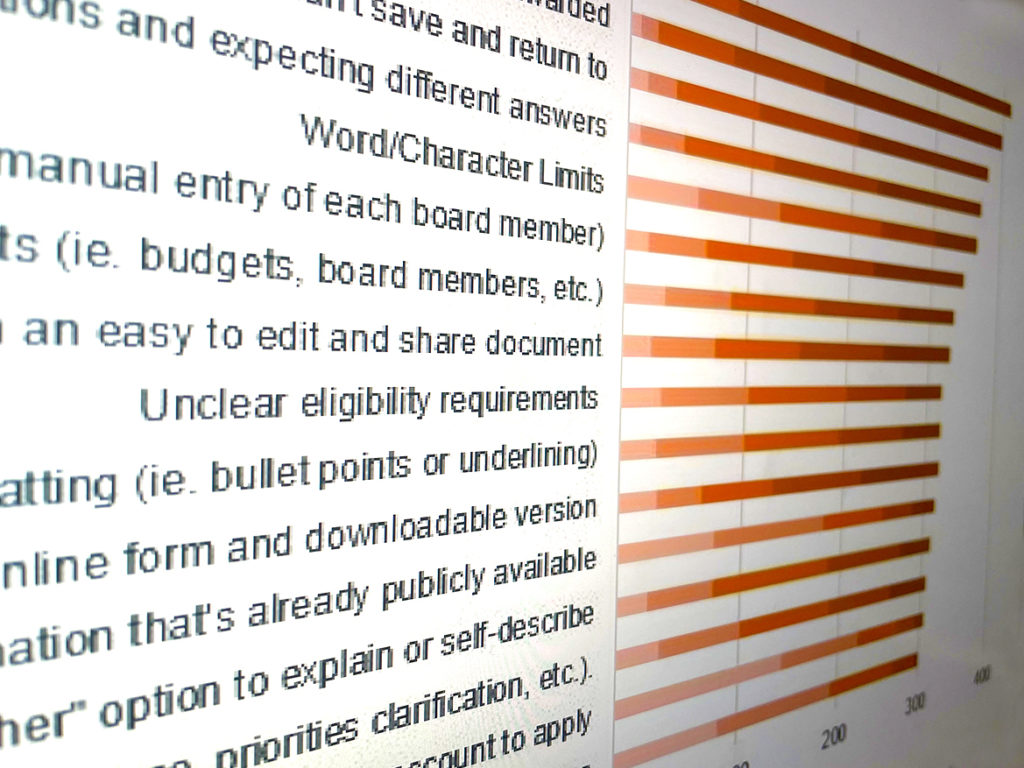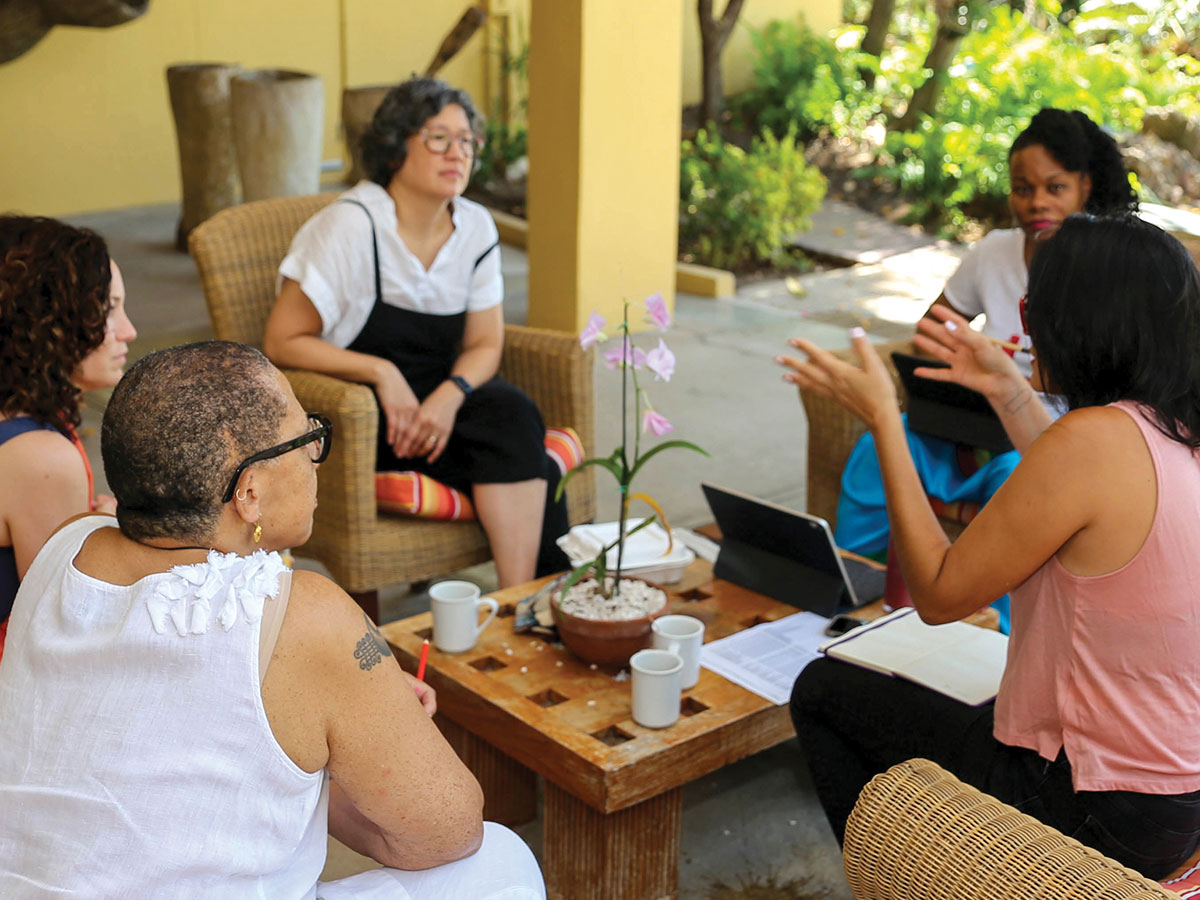#FixTheForm. You Don’t Need Permission to Be Revolutionary.

“Grant operations are key to envisioning change, making effective updates, and working toward equity in philanthropy,” said Michael McAfee, President and CEO of Policy Link, during a keynote address at PEAK 2021’s annual conference. And it’s true. PEAK’s 5,000 members hold unique power as leaders in grants operations and, perhaps without realizing it, are in a position to effect impactful change in the sector. How, you might ask. Well, thousands of nonprofits have an answer for you, and it might not be what you expect: technical fixes to grant applications.
First, some background. In the spring of 2020 I was one of three people who read through more than 2,500 reviews of foundations written on GrantAdvisor.org, an anonymous review site of grantmaking foundations. We sought to learn what the major opportunities were for strengthening philanthropy according to honest nonprofit feedback. When online grant portals and forms emerged as a consistent theme, we were shocked and motivated.
Building on these findings, Laura Solomons, a brilliant fundraiser and grantmaker based in London, and I teamed up to launch #FixTheForm, a survey that dives into 16 of the most commonly cited pain points in grant applications. We sent out an open call to participate in the survey and asked respondents to rank their top three and describe the severity of impact on their lives. We hoped for 200 responses. In less than four weeks, we received 500 responses from nine countries.
Consensus from the field was clear: Technical time wasters were the biggest problem areas, chief among them being unable to see the full application ahead of time. We also learned that these pain points come at an immense cost for the sector. Nonprofits consistently report that 20 to 30 percent of their full-time work is spent navigating poorly designed forms. That’s hundreds of thousands of hours lost every year that could have otherwise been invested in mission-advancing work. Beyond efficiency and effectiveness, these pain points also pose barriers to equity in grantmaking: only nonprofits large enough to afford staff who can invest the time in navigating the forms can compete for grant funds. (Read the full results here.) As one #FixTheForm survey respondent said, “For many organizations, especially ones that are Black- or Brown-led and far more likely to be chronically under-funded, these are particularly harmful [practices].”
GrantAdvisor soon after teamed up with the Technology Association of Grantmakers (TAG) to launch 100 Forms in 100 Days, a time-limited campaign seeking to recruit foundations to make their full application available ahead of time and contribute to research on the commonality of grant applications.
From April 15 to July 23, we collected 128 forms from some of the largest foundations in the United States and United Kingdom. TAG also worked with five industry-leading grants management system providers to make permanent changes to their platforms. These changes now enable more than 3,000 foundation clients to make their full applications available to grantseekers, impacting one million nonprofits who apply to them. If this change saves one hour per application, that’s one million hours saved!
It is truly inspiring to see nonprofits, foundations, and the tech industry coming together to make practical changes and address an issue that costs our sector millions of dollars a year. The 100 Forms in 100 Days campaign demonstrates the immense collective power we hold when nonprofits offer honest feedback, and grants operations managers at foundations respond. Seemingly small changes are having a big impact, and there’s more work for us to do together.
So, what can you do to effect impactful change in the sector? Take the #FixTheForm findings to heart and center nonprofits in the design of your grant applications and reports by making these changes:
- Create a Microsoft Word version of your grant application and make it available on a publicly accessible website. Avoid PDFs and keeping these materials behind a user wall.
- Ensure that applicants can easily save their grant application and access it later.
- Clearly state how long of an answer you are looking for and that you provide enough space to accommodate their response. For example, if you want an answer to be one page of double-spaced text, the Word doc should either allow an applicant to freely type within that document, or, if you want them to respond within a text box, the text box should be sized appropriately. If you are using an online form, similarly make sure the word and character limits match the amount of content it takes to answer your question.
- Accept information on budgets, board lists, and partner lists as the nonprofit formats them. It takes nonprofits up to two hours or more to translate that information so that it neatly fits into funders’ templates. Depending on how many proposals or reports the nonprofit submits in the course of a year, that time commitment can be multiplied by 30 to 50 fold.
- If you ask nonprofits to test your forms, compensate them for their time.
The ability to make many of these technical changes resides within the agency of a grants manager role. We can build a more equitable sector if we can work together to #FixTheForm.



